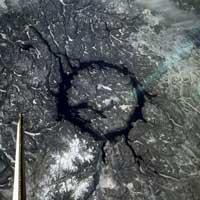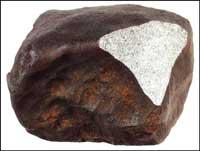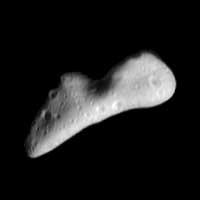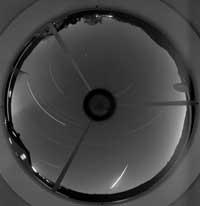Meteorite hunters

The objects of space that reach the earth's surface are called meteorite. They are usually fragments of asteroids or comets, but there are also fragments coming from Mars and the Moon. About twenty-five of each. Astronomers normally know according to their components whether the meteorite is of asteroid origin or whether it comes from another planet. But in order to do so, first you have to catch them. And that's not easy.
Meteorite search campaigns have been taking place for 15-20 years. These campaigns take place in certain places, especially in Antarctica, but are also in the Sahara or Atakama desert. In general, meteorite seekers leave geologically stable places. But not all. Some have preferred to wait for meteorites to fall from the sky.
Fire Ball Nets
In the early years of the 20th century, astronomer Ernst Opik organized systematic observation expeditions to the deserts of the North West. From these observations, he concluded that most meteorites came from interstellar space. Decades later other researchers managed to measure the speed of meteorites with very fast cameras. Thus, most meteorites were attributed to comets, although many original bodies had asteroid-like orbits.

Soon after, aware that meteorites were a very interesting tool to learn about the solar system, they begin to classify themselves systematically. And they realized that the origin of the thousands of meteorites collected on Earth was not always different. It was concluded that all were parts derived from 10-100 bodies.
At that time it was not easy to establish the relationship between the meteorite and the original body, but they did not succumb. If they explored the sky and trapped meteorites on their way to Earth, several astronomers thought they could figure out where they came from and get important clues.
Think and do it. Several areas of Europe, Canada and the United States were filled with cameras to spy on thousands of square kilometers. The goal is simple: to photograph the meteorites, calculate the orbits and collect the fallen parts to Earth. But its compliance has been very complicated. In forty years only four meteorites have captured it.

As a result, the European network is the only major network currently in operation. They spy a million square kilometers through cameras installed in the Czech Republic, Slovakia, Germany, Belgium, Luxembourg, Switzerland and Austria. But the money is bad and thanks to the work of the volunteers maintain the network.
In forty years, four
The first meteorite was captured in Europe on 7 April 1959 in the Czechoslovakia of the time. And despite the low success of the project, it cannot be denied that they started with desire. In fact, the first meteorite fell in the vicinity of the home of one of the founders of the European Network, who, seeing the walls of the house lit up, instead of being surprised, ran to the place where the television was and adjusted its brightness. This reaction allowed us to calculate the light intensity of the meteorite, giving more light than the moon.
That night it worked as their own network and they managed to photograph the meteorite. So, two days after calculating where he fell, they found a stony of 4-5 kilos near the town of Pribram. The components of the meteorite showed that it was a primitive stone, from the time the solar system was being formed.

After this success, the fireball networks experienced a drought of eleven years, since until January 1970 they could not hunt another meteorite. The second fell in the United States, in Oklahoma, and they were able to recover 17 kilos. The third fell in Canada in 1977, of 4.6 kilos, and the last in Germany in July 2002.
Although only four meteorites have been captured, the network's ultimate success has given much to talk about. It is estimated that the fourth and the first have the same orbit, that is, they have arrived from the same place, although apparently they are totally different. They do not have the same composition and above all they do not have the same age. The first spent 48 million years in space before falling to Earth and the last only 12. Researchers have considered the phenomenon as an indicator of the complexity of weather sources, but it can also be considered a miracle. It is striking that only four meteorites are detected and such a coincidence occurs.
Published in 7K.
Buletina
Bidali zure helbide elektronikoa eta jaso asteroko buletina zure sarrera-ontzian











